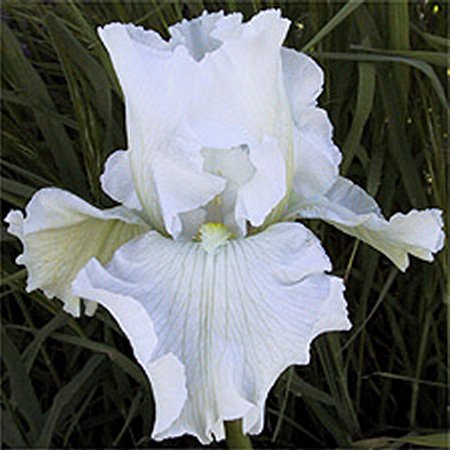
2005 Year in Review
Back to Page two: Other Listing | Back to Year in Review Index
Iris Care |
|
Source: Barbara Bates (630) 584-6166 Caring for iris plants can be easy if you follow a few basic steps, said a University of Illinois horticulture educator. "If the plant's bloom is weak, if the plants are tightly packed in the bed, if it has been more than four years since you planted them, and if they are done blooming for the season, it is time to divide them," said Barbara Bates. To properly divide the plants, you'll need a shovel, a trowel, a sharp knife, a pair of 12-inch scissors, two buckets of water, and a pail of 10 percent bleach water--water and bleach mixed at 9:1. "A cloudy day is ideal for this operation, but not necessary," said Bates. Start by digging out the entire iris and set them in a bucket of water to wash the soil from the roots and the rhizomes. Rhizomes are the thick, horizontal stems from which the roots grow and where buds are present. "Dip the sharp knife in the bleach water to clean it, and then begin by cutting off any sections of rhizomes without leaves or buds," said Bates. "The goal is to end up with five to-seven-inch sections of healthy rhizomes with at least one good fan of leaves and two or more buds for next year. "Healthy rhizomes should be blemish-free and no less than one inch in diameter. Discard the old, unproductive sections of rhizomes, as well as thin, weak sections. Diseased sections should be discarded as well." Bates said the long, vigorous sections with foliage and buds should be cut into several sections to avoid overcrowding when replanted. The knife should be dipped in the bleach solution between cuts to prevent the spread of disease. "Trim the fans of foliage in half, removing any brown dried leaves," she said. "Remove or trim off any brown, discolored roots. Soak the trimmed, divided sections in the second bucket of water until ready to replant." Now is the time to work the soil in the bed. It should be turned over or tilled to add air and reduce compaction. Mix in a balanced granular fertilizer (10-10-10) and organic matter if needed. "With your shovel, make ridges of soil running longways in the bed, at least 12 inches apart," Bates said. "Lay out the iris 12 inches apart in the rows, staggering the rows as you work from front to back in the bed. "Use your hands to spread the roots on both sides of the soil ridge, and then pat the soil around the roots. The soil should not cover the rhizome, but should hug the sides of it. Pat the roots in to keep the fans upright. Water them in, and continue to water weekly till they are well established." Bates said that the best time to divide irises is just after they finish blooming. This gives them time to re-establish roots before the end of the growing season and does not disrupt the blooming cycle. "However, iris can be divided any time during the growing season," she added. "Just understand that you may lose bloom for a year. If you plan to divide in the fall, allow at least six weeks of growing season for the divisions to establish roots and hold the plants in the ground during the freeze-thaw cycles of winter. "This may sound like major surgery, but it is not difficult." For additional information, Bates recommended contacting the local U of I Extension office, or go the Urban Program Resources Network at: Urban Programs Resource Network. by Editor, theCity1.com |
|
Copyright © 2005 TheCity1.com.
All rights reserved






